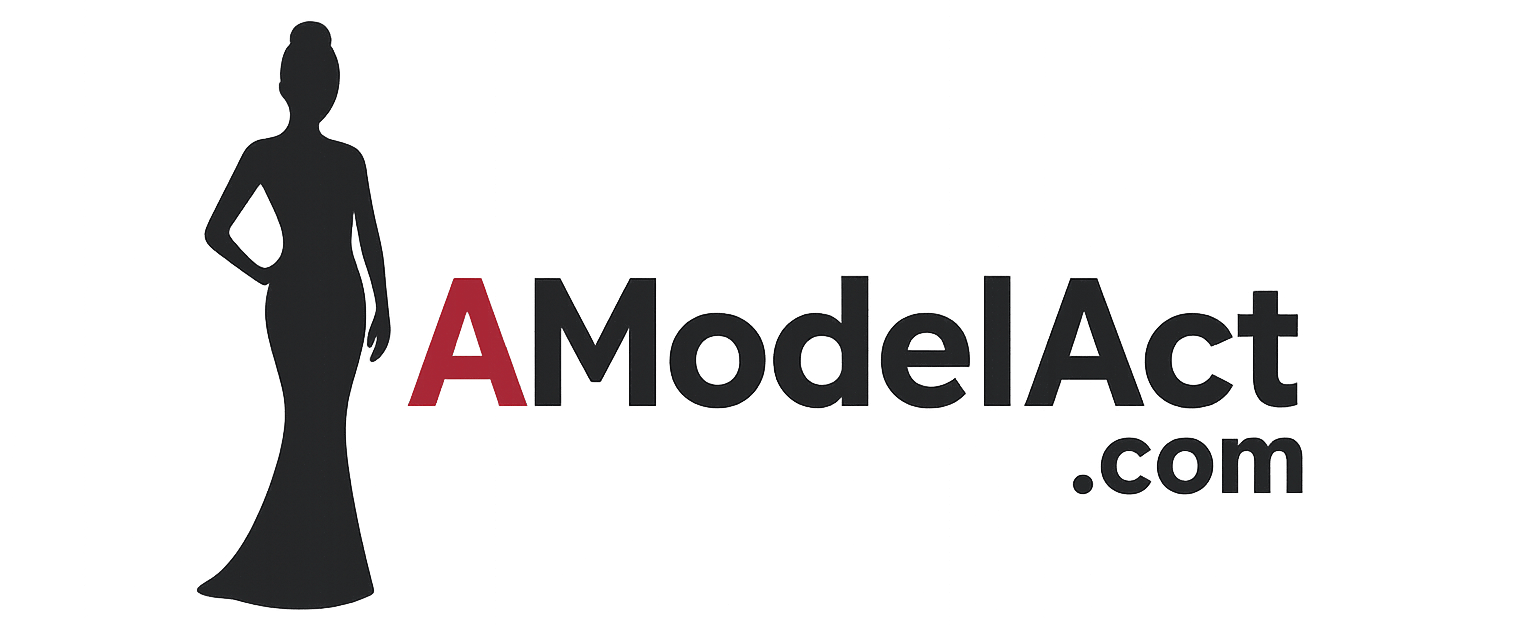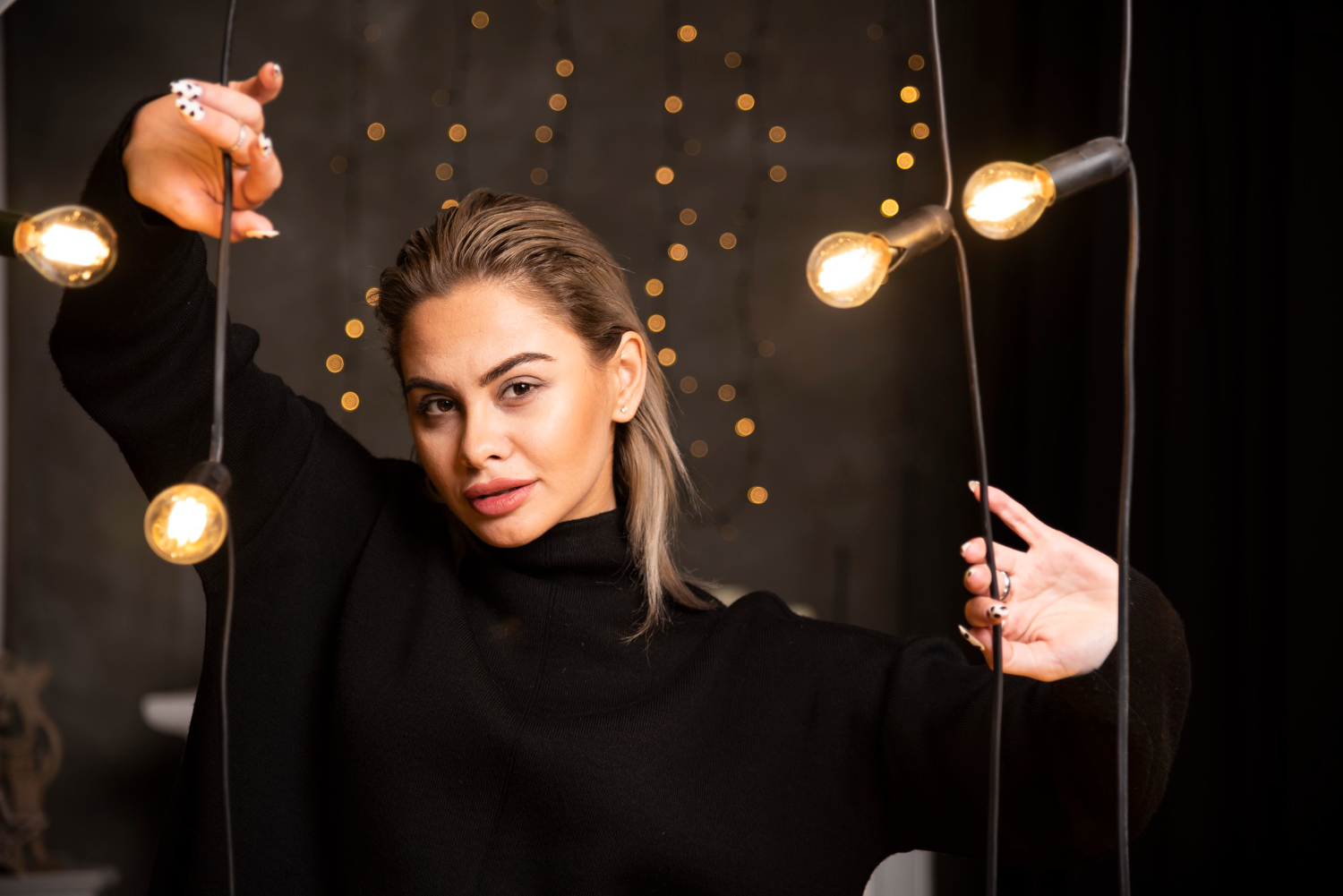Mastering how to pose with different lighting styles is one of the most underrated skills a model can develop. Lighting is a silent director on set, it defines mood, enhances features, and tells a visual story. As a model, my job is to understand how light interacts with my body and face so I can use it to my advantage. Every photoshoot I’ve done has its own lighting setup, and adapting my pose to match that lighting can elevate a decent shot into a captivating one.
Soft lighting and subtle expressions
Soft lighting, often produced with diffused sources like large softboxes or natural light through sheer curtains, creates a gentle, flattering effect. It smooths out skin texture and reduces harsh shadows. This lighting style lends itself well to beauty, skincare, and editorial shoots focused on emotion or tranquility.
In these scenarios, I usually avoid sharp, angular poses. I go for curved lines and gentle movement, slightly tilted heads, relaxed shoulders, and subtle hand gestures. Soft lighting doesn’t demand drama, so my expressions stay neutral or dreamy. If I’m working with a close-up, I make sure my skin looks hydrated and even-toned since soft light enhances that clean aesthetic. I often let the light wrap around my cheekbones or catch the natural gleam in my eyes.
Dramatic lighting and strong angles
Hard lighting or dramatic lighting setups, like split lighting or Rembrandt lighting, produce bold contrasts and deep shadows. They’re often used in fashion editorials or high-concept campaigns. When I’m under this kind of lighting, I shift to more architectural poses. Think of creating right angles with elbows, long neck extensions, and exaggerated body curves.
What works best here is structure. I try to frame my face and body so the shadow falls in intentional ways, half-lit faces, one leg fully exposed while the other is in shadow, or standing sideways to create depth. Knowing how to pose with different lighting styles means thinking in dimensions. I’ve learned to rotate slowly during test shots until I hit that angle where the light sculpts my face just right. When done properly, dramatic lighting can add mystery, intensity, or power to your frame.
Backlighting and silhouette posing
Backlighting is when the primary light source is behind me, usually creating a halo or silhouette effect. This style is common in romantic, whimsical, or lifestyle shoots, especially during the golden hour.
To work with backlighting, I make sure my movements are more fluid and expansive. If the shoot is aiming for a silhouette, I go for strong body outlines, hands lifted away from the torso, a distinct curve in the spine, and legs placed to show separation. Expression becomes less important here than shape. When light is streaming behind me but not obscuring my features entirely, I take care not to overexpose my face. A slight turn toward the camera or angling my jawline can help catch just enough light to highlight my expression without losing the overall backlit mood.
Flat lighting and editorial precision
Flat lighting minimizes shadows and highlights, giving an evenly lit look across the whole image. It’s often used in catalog work, e-commerce, or skincare shoots where the product or garment must be clearly visible.
This is when precision matters. Since shadows won’t mask or sculpt, I rely on small, calculated movements. I keep my body elongated, core engaged, and limbs symmetrical or deliberately aligned with the frame. I make sure that my clothes lay well, hair stays in place, and facial expressions are clean and readable. It may not be as artistic as some lighting styles, but flat lighting requires me to be in control of every part of my appearance, from fingers to jawline.
Side lighting and sculpted silhouettes
Side lighting casts light from the left or right side of the subject, creating high contrast between light and shadow. It enhances texture, shape, and drama. When I’m in this setup, I focus on presenting my best profile or experimenting with angles that show depth, turning halfway toward the camera, arching my back, or lifting my chin to allow shadows to contour my features naturally.
Side lighting is perfect for playing with mystery. A glance over the shoulder, a hand half-obscuring part of my face, or a bold, angular stance all work beautifully in this kind of light. One key trick I’ve learned: a slight tilt in the shoulders can emphasize bone structure and make shadows fall more dramatically on the collarbones or cheekbones.
High-key lighting and expressive emotion
High-key lighting floods the frame with brightness and minimizes shadows. It’s used in upbeat commercial campaigns, fashion editorials with a clean aesthetic, or anything intended to feel happy, modern, or fresh.
I match the tone with open, lively poses, arms away from the body, wide stances, expressive hands, and animated facial expressions. I make eye contact with the camera more often in high-key setups because the style feels inviting and personal. Movements are less sultry and more spontaneous. I’ll jump, twirl, or laugh to create dynamic action that fits the tone. Clothing also pops in this light, so I’m extra careful to avoid anything that can bunch or wrinkle unnaturally.
Low-key lighting and emotional depth
Low-key lighting is the opposite, it’s moody, dark, and cinematic. These shoots demand emotional depth and control. My poses become slower, more intentional. I hold longer gazes and lean into the tension created by shadows.
In low-key setups, subtlety is key. I’ve learned to let my body speak volumes without dramatic movement. A slight shift in posture, a narrowed gaze, or even how my hand rests on my chin can tell a story. This lighting style reveals emotion in small doses, so I focus on inner intensity rather than over-the-top gestures.
Studio strobes and quick reflexes
Working in a studio with flash or strobe lighting demands awareness of timing. The light only hits when the shutter clicks, so my posing needs to be deliberate and synced with the rhythm of the photographer.
I work in bursts. Pose, hold, shift slightly, hold again. It’s a dance with the camera. I avoid continuous movement and instead transition smoothly from one shape to another. Studio strobes are incredibly unforgiving when it comes to eyes and hand positioning. If I blink or let my hands go limp at the wrong moment, the shot is wasted. Practicing how to pose with different lighting styles has trained me to hold tension even in stillness.
Natural light and adaptive posing
Outdoor lighting changes constantly, clouds roll in, the sun shifts, shadows stretch across your face. Flexibility becomes essential. When I’m working with natural light, I listen to the photographer’s cues more closely and keep scanning for the best light.
Golden hour calls for soft, flowing poses. Midday sun might need hats, hand shadows, or chin tilts to avoid harsh lines. Overcast days are excellent for consistency, so I go for cleaner, more structured shots. Natural light requires a mix of sensitivity and responsiveness. I adjust my pose not just based on where the light is, but also how it’s behaving.
Colored gels and stylized character
Photoshoots that use colored gels or neon-style lighting setups are meant to create bold moods or surreal atmospheres. They’re less about realism and more about art and character. In these sessions, I embody a persona. Poses become exaggerated, theatrical, even otherworldly.
With colored light, I often play with symmetry or off-kilter shapes, crossed legs with arched arms, profiles with thrown-back hair, crouching poses with strong hand lines. The goal is to become part of the scene’s fantasy. Colored lighting doesn’t always flatter skin tone, so I concentrate on posture, form, and storytelling instead of natural beauty.
Putting it all together
What’s helped me the most is understanding that posing isn’t just about what I do, it’s about how I respond. How to pose with different lighting styles is really a conversation between my body and the light. The pose that looks stunning in soft natural light might fall flat under strobes. The dramatic twist that brings life to a moody scene may look too forced in flat lighting.
Practice is essential. I’ve spent hours in front of mirrors, under ring lights, and with self-timer shots studying how small shifts change the light’s impact. I study shadows on my body, how they travel across my face, how light bounces off fabrics. I’ve even attended lighting workshops just to understand what photographers see.
Conclusion
Learning how to pose with different lighting styles has transformed the way I show up on set. It’s no longer just about angles and aesthetics, it’s about harmony. When I adjust my pose to work with the light instead of ignoring it, every frame feels more alive. It’s not about being perfect in every shot. It’s about reading the light, interpreting its story, and delivering a pose that complements its language.

